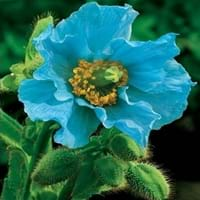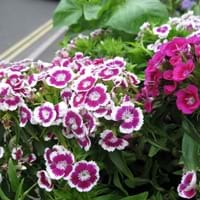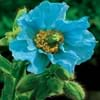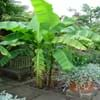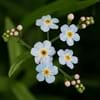Life Span
Perennial
Biennial and Perennial
Type
Perennial
Flowering Plants
Origin
Southern Asia
Europe, Northern Europe, Western Europe
Types
Not Available
'Bellagio Apricot' begonia, 'Bellagio Blush' begonia, 'Bellagio Pink' begonia
Number of Varieties
Not Available
Habitat
Mountains
Subtropical climates, Tropical regions
USDA Hardiness Zone
Not Available
3-9
Sunset Zone
A1, A2, A3, 1b, 2a, 2b, 3a, 3b, 4, 5, 6, 17
21,22
Habit
Upright/Erect
Cushion/Mound-forming
Flower Color
Blue, Rose
White, Yellow, Red, Pink, Light Pink, Rose, Dark Red, Orange Red
Flower Color Modifier
Bicolor
Bicolor
Fruit Color
Green, Tan
Not Available
Leaf Color in Spring
Green, Blue Green
Light Green, Blue Green, Gray Green
Leaf Color in Summer
Green, Blue Green
Light Green, Blue Green, Gray Green
Leaf Color in Fall
Green, Blue Green
Light Green, Blue Green, Gray Green
Leaf Color in Winter
Light Green
Light Green
Leaf Shape
Oval with toothed margin
Long Linear
Plant Season
Summer
Spring, Summer, Fall
Sunlight
Partial Sun, Partial shade
Full Sun, Partial Sun
Growth Rate
Medium
Medium
The pH of Soil
Acidic, Neutral
Neutral
Soil Drainage
Well drained
Well drained
Bloom Time
Early Summer
Early Spring, Spring, Late Spring
Tolerances
Cold climate
Drought, Shade areas
Where to Plant?
Ground
Container, Ground, Pot
How to Plant?
Divison, From bulbs, From Rhizomes, Seedlings
Divison, Seedlings, Stem Planting
Plant Maintenance
Not Available
Low
Watering Requirements
Do not let dry out between waterings, Requires consistently moist soil
Needs watering once a week
In Summer
Lots of watering
Moderate
In Spring
Moderate
Moderate
In Winter
Average Water
Average Water
Soil pH
Acidic, Neutral
Neutral
Soil Drainage Capacity
Well drained
Well drained
Sun Exposure
Partial Sun, Partial shade
Full Sun, Partial Sun
Pruning
In late autumn, Remove damaged leaves, Remove dead branches, Remove dead leaves
Cut or pinch the stems, Remove damaged leaves, Remove dead branches, Remove dead leaves
Fertilizers
Balanced liquid fertilizer monthly
All-Purpose Liquid Fertilizer, fertilize in growing season, fertilize in spring, fertilize in summer
Pests and Diseases
Downy mildew, Slugs, Snails
Fusarium wilt, Gray mold, Leaf spot, Root rot, Rust, Slugs
Plant Tolerance
Cold climate
Drought, Shade areas
Flower Petal Number
Single
Single, Double, Semi-Double
Foliage Texture
Not Available
Fine
Foliage Sheen
Not Available
Matte
Attracts
Bees, Birds, Butterflies
Not Available
Allergy
Not Available
Asthma
Aesthetic Uses
Beautification, Bouquets, Cottage Garden, Showy Purposes
Beautification, Bouquets, Cottage Garden
Beauty Benefits
Not Available
Not Available
Edible Uses
Not Available
Yes
Environmental Uses
Not Available
Air purification
Medicinal Uses
Analgesic, Mild sedative
Bronchitis, Candidiasis, Cold, Digestive disorders, Dysentry, Haemoptysis, Liver problems, Menstrual Disorders, Scrofula, Swelling
Part of Plant Used
Flowers
Whole plant
Other Uses
Employed in herbal medicine
Food for animals
Used As Indoor Plant
No
Yes
Used As Outdoor Plant
Yes
Yes
Garden Design
Feature Plant, Mixed Border
Bedding Plant, Container, Cutflower, Feature Plant, Groundcover, Hanging Basket, Mixed Border, Rock Garden / Wall
Botanical Name
MECONOPSIS betonicifolia
DIANTHUS barbatus 'Heart Attack'
Common Name
Himalayan Blue Poppy
Heart Attack Sweet William, Sweet William
In Hindi
हिमालय ब्लू पोस्ता
स्वीट विलियम
In German
Himalaya Blue Poppy
Bartn
In French
Himalaya pavot bleu
sweet william
In Spanish
Amapola azul del Himalaya
Guillermo dulce
In Greek
Himalayan μπλε παπαρούνας
είδος γαρύφαλλου
In Portuguese
Himalayan Blue Poppy
william doce
In Polish
Himalayan niebieski mak
słodki William
In Latin
Blue Himalayan Poppy
amaranthus
Phylum
Magnoliophyta
Magnoliophyta
Class
Magnoliopsida
Magnoliopsida
Order
Ranunculales
Caryophyllales
Family
Papaveraceae
Caryophyllaceae
Genus
Meconopsis
Dianthus
Clade
Angiosperms, Eudicots
Angiosperms, Core eudicots, Eudicots
Tribe
Not Available
Not Available
Subfamily
Not Available
Not Available
Number of Species
Not Available
Importance of Himalayan Blue Poppy and Sweet William
Want to have the most appropriate plant for your garden? You might want to know the importance of Himalayan Blue Poppy and Sweet William. Basically, these two plants vary in many aspects. Compare Himalayan Blue Poppy and Sweet William as they differ in many characteristics such as their life, care, benefits, facts, etc. Every gardener must at least have the slightest clue about the plants he wants to plant in his garden. Compare their benefits, which differ in many ways like facts and uses. The medicinal use of Himalayan Blue Poppy is Analgesic and Mild sedative whereas of Sweet William is Bronchitis, Candidiasis, Cold, Digestive disorders, Dysentry, Haemoptysis, Liver problems, Menstrual Disorders, Scrofula and Swelling. Himalayan Blue Poppy has beauty benefits as follows: Not Available while Sweet William has beauty benefits as follows: Not Available.
Compare Facts of Himalayan Blue Poppy vs Sweet William
How to choose the best garden plant for your garden depending upon its facts? Here garden plant comparison will help you to solve this query. Compare the facts of Himalayan Blue Poppy vs Sweet William and know which one to choose. As garden plants have benefits and other uses, allergy is also a major drawback of plants for some people. Allergic reactions of Himalayan Blue Poppy are Not Available whereas of Sweet William have Asthma respectively. Having a fruit bearing plant in your garden can be a plus point of your garden. Himalayan Blue Poppy has no showy fruits and Sweet William has no showy fruits. Also Himalayan Blue Poppy is flowering and Sweet William is not flowering . You can compare Himalayan Blue Poppy and Sweet William facts and facts of other plants too.
